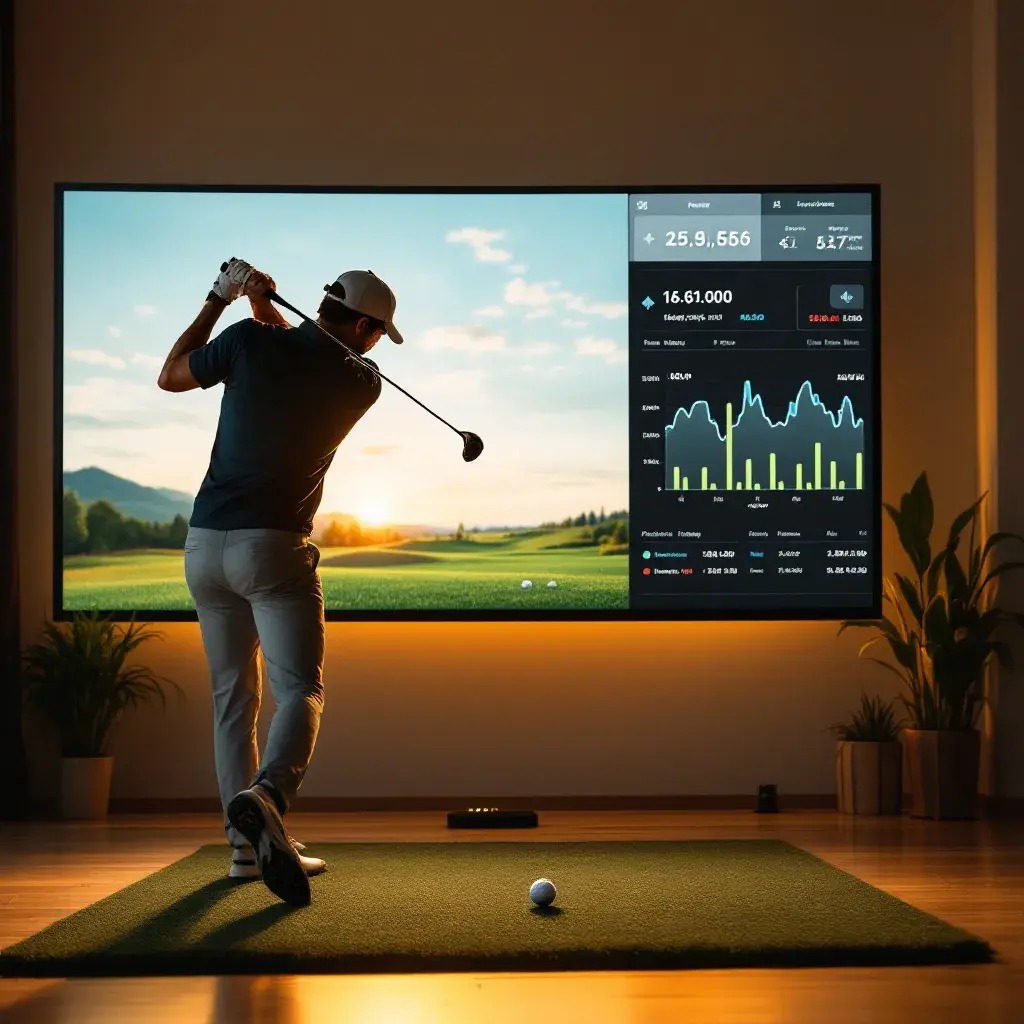Investing in a launch monitor for home use provides unparalleled convenience. It allows you to practice consistently without the need to travel to a course or driving range. Modern launch monitors are compact, user-friendly, and packed with features that make golf training accessible anytime.
One of the most significant benefits of using a launch monitor at home is the immediate feedback it provides. Key metrics such as ball speed, launch angle, spin rate, and carry distance are displayed in real time. This data enables golfers to analyze every swing and make precise adjustments to improve consistency and power.
For instance, if your ball speed is lower than desired, the launch monitor at home data might indicate that your swing mechanics need improvement. Similarly, analyzing spin rates can help you determine whether you need to tweak your equipment, such as switching to a ball better suited for your game.
Setting up a launch monitor at home also makes experimenting with new techniques or equipment easier, allowing you to fine-tune your game at your own pace.
Benefits of Using a Launch Monitor at a Golf Club
Using a launch monitor at a golf club adds another layer of utility. Golf clubs often house high-end launch monitors with advanced features that may not be feasible for home setups. These devices provide in-depth analysis, often coupled with professional coaching services, to optimize your performance on the course.
At a golf club, launch monitors are typically integrated into swing studios or practice bays, where you can hit balls into a screen or onto the range while receiving comprehensive feedback. These environments simulate real-game conditions, offering an excellent opportunity to refine your skills under realistic settings.
Additionally, golf clubs with launch monitor at home often allow players to compare their stats with others. This creates a competitive yet educational atmosphere that can motivate you to push your limits. For serious golfers, the data captured can be invaluable in tailoring a training regimen to address specific weaknesses.
How to Read Launch Monitor Data Effectively?
Understanding launch monitor data is essential for making the most of this technology. While launch monitors display a wealth of information, it is crucial to focus on key metrics that align with your goals.
- Ball Speed: Indicates how fast the ball is traveling after impact. A higher ball speed generally correlates with more distance.
- Launch Angle: Reflects the angle at which the ball leaves the clubface. An optimized launch angle ensures maximum carry and roll.
- Spin Rate: Excessive spin can cause ballooning shots, while insufficient spin may lead to a lack of control.
- Carry Distance: Shows how far the ball travels through the air before hitting the ground.
- Club Path: Helps identify whether your swing path is too far inside or outside, leading to slices or hooks.
By familiarizing yourself with these metrics, you can use the data to identify patterns and areas needing improvement. For example, if your carry distance is consistently short, adjustments to your swing speed or launch angle may be necessary.
Taking Professional Advice from Launch Monitor Data
While it’s possible to self-analyze launch monitor data, seeking professional guidance can significantly accelerate your progress. Golf instructors equipped with launch monitors can provide expert analysis and suggest targeted drills to correct flaws in your technique.
Professional advice is especially useful when interpreting complex metrics like dynamic loft or angle of attack, which require a deeper understanding of biomechanics and equipment interactions. Coaches can also use the data to recommend equipment changes, such as altering shaft stiffness or clubface loft, to complement your swing style.
Moreover, many pros use launch monitors during lessons to demonstrate the visual impact of adjustments. This real-time feedback reinforces learning and makes it easier to implement changes.
Putting Launch Monitor Data to Use
The ultimate goal of analyzing launch monitor data is to turn insights into actionable improvements. Here’s how to do it:
- Set Goals: Use the data to define clear objectives, such as increasing your ball speed by five mph or reducing your spin rate for better control.
- Practice with Purpose: Focus on one or two metrics at a time to avoid overwhelming yourself. Consistent, targeted practice yields better results.
- Track Progress: Review your launch monitor data regularly to evaluate improvements and refine your strategies.
- Simulate Game Scenarios: Use features like virtual golf courses to apply your training in realistic conditions, preparing you for actual rounds.
By integrating launch monitor data into your routine, you can make measurable strides in your performance and gain a competitive edge on the course.
Conclusion
The advent of launch monitor at home has revolutionized the way golfers train and improve their game. Whether practicing at home, utilizing advanced setups at a golf club, or collaborating with a coach, the insights from launch monitor data are invaluable. By understanding and applying the metrics effectively, golfers of all levels can enhance their skills, achieve greater consistency, and enjoy the game like never before.


